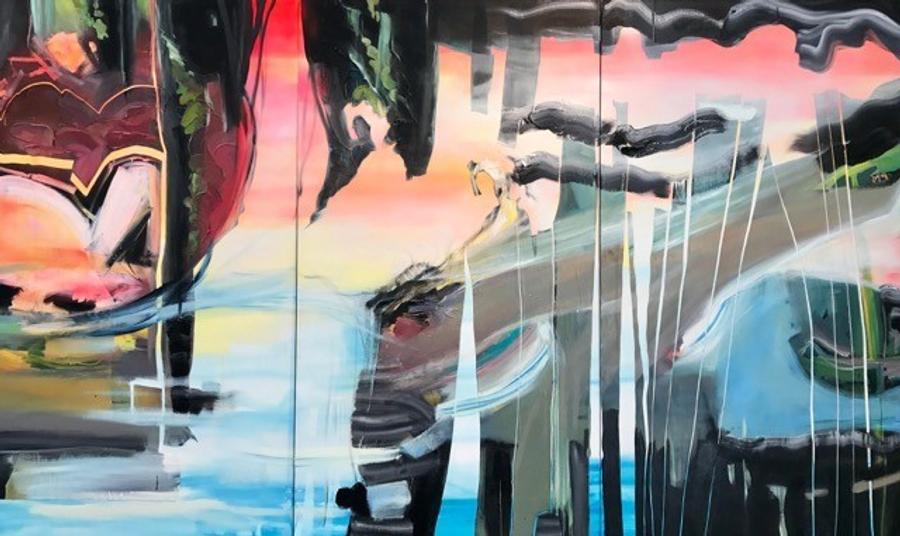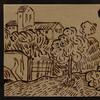Five Los Angeles-based Female Artists Redefine Sublime in PMCA's 'The Feminine Sublime'
- PASADENA, California
- /
- September 19, 2017

The Feminine Sublime, an exhibition on view at the Pasadena Museum of California Art from January 21–June 3, 2018, formulates an alternative and more inclusive contemporary reading of the sublime. Historically, depictions of the sublime were reserved for male painters whose rationality and order were posed against nature, the imagination, or the female “other.” In this exhibition, large-scale paintings by five female artists present a counter-narrative that upends previous ideas of the sublime in painting with a unique feminist perspective. Exhibition artists and Los Angeles-based painters Merion Estes, Yvette Gellis, Virginia Katz, Constance Mallison, and Marie Thibeault reconsider traditional approaches to landscape and enlist challenging aesthetics, formal inventiveness, and provocative imagery to re-imagine relationships with rapidly changing urban and natural environments in more relevant and meaningful ways.
In the eighteenth century, male painters utilized the sublime as a forceful theme, representing nature as a pristine and overpowering presence that man’s reason could transcend. Mid-twentieth century “masters of the abstract sublime” sought to reconnect the modern viewer with feelings of dissolution and destabilization that would result in a transformative experience, joining the universal with subjectivity. Challenging entrenched hegemonies, the twentieth-century feminist movement and postmodern critical theories carved out space for an inclusive version of the sublime.
Unfulfilled by traditional or abstracted landscapes, the exhibition artists give voice to the “other.” The painters’ large-scale works create immersive experiences within which viewers contemplate contemporary readings of the sublime as well as the annihilating and terrifying effects of global climate change, industrial capitalism, nuclear catastrophe, terrorism, consumerist environmental degradation, technology overload, and even post-apocalyptic landscapes. The artists challenge the idea of nature as an endless repository of resources to be conquered, exploited, and consumed for purely human ends. Though they articulate ideas of dystopian insecurity, fragmentation, and collapse, their works invoke transformation, transition, and the possibilities for painting to still promote the kind of skepticism instrumental for the renewal of human consciousness. The paintings question the master discourse that perpetuates oppression and open the sublime to an alternative interpretation that respects differences and stresses co-participation.
Deeply involved with disruptive formal issues and aesthetics, the artists’ acts of painting involve excess materiality and female body experience. The beautiful is not banished but rather understood alongside the monstrous and the terrifying and considered as an activating force for change.
“This timely exhibition calls the viewer to consider not only the environment and humanity’s impact on it, but also the gender imbalances that have existed throughout human history and how they affect our contemporary society, even as it progresses,” says exhibition curator and artist Constance Mallinson. “The five artists in The Feminine Sublime have established themselves as important voices and proponents of eco-feminism. As California finds itself as a leader in the fight against climate change, these women will be in the forefront of articulating the role of artists in that regard.”
The Feminine Sublime leaves the viewer to wrestle with unresolved conflicts: beauty versus the abject; human ingenuity and global capitalism versus over consumption; destruction versus creation; the wonders, advantages, and drawbacks of technology; and more. The artists’ alternative versions of sublimity examine the present, freeing us from the limiting views of the past. They forge a new understanding of the environment, as well as the sublime, paving the way for an inclusive future free from confining categorization.
















